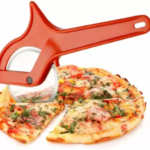Bunion pain is one of the most common foot problems that people face. It is caused by a deformity of the big toe joint, which causes the big toe to angle towards the second toe, leading to pressure and irritation. Bunion pain can be intense and it can make it difficult to walk, wear shoes or even put on socks.
Wearing the right shoes for bunion problem can help reduce your pain and make your life easier. The first step is doing some research work by searching the keyword shoes for bunions in Australia.
Here are some tips on how to buy shoes for bunions:
Buying the right shoes for bunion problem
Choose shoes with a wide toe box
The best shoes for bunions are wide, roomy and have plenty of space at the ball of the foot. They should fit comfortably and allow your toes to move freely. Here’s how to buy the right shoes for bunions:
Choose a wide shoe with plenty of room in front of your toes. Make sure there’s no pressure on your bunion. You should be able to wiggle all of your toes without any discomfort.
Choose a shoe with a wide toe box (the part of the shoe that fits around your toes). A narrow toe box will squeeze your toes together and put pressure on them. This will make it more likely that you’ll develop calluses or corns on top of the bunion bump or on the sides of your foot where your second toe joins with your foot bone (metatarsal joint).
Look at the tongue of your shoe. If it’s not attached to the front of your shoe, you’ll need more space in front of your toes so they don’t rub against the top of your foot (this may also be true if you have high arches). This is especially important if you wear narrow-toed shoes such as ballet flats or loafers
The shoes should not have stiff soles
Choose a flexible shoe that allows plenty of movement. Shoes with stiff soles or heels can aggravate bunions because they prevent the feet from bending normally when walking or standing.
Have enough room in the heel cup. The heel should be able to rest securely without slipping back or forward when walking or standing. This will prevent a bunion from developing by stopping the joint from being overused and injured.
The shoes should be well-padded
Your shoes should be well padded where needed, such as around the ankles and arches (where bunions tend to form). Padding helps keep pressure off of tender areas and gives extra cushioning when needed most — especially if you’re on your feet all day.
Wearing shoes with proper support will reduce the pain caused by bunions and also alleviate the condition. This includes wearing shoes that offer ample room, allow your toes to move freely and fit comfortably.
Remember, one of the keys to living a healthy and active lifestyle is finding the right shoe for your foot problem, whether it be bunions or something else. There are many great shoes on the market to suit every need, so don’t let bunion pain stop you from leading a more fun and active life.
Also Visit: What Are Common Online Installment Loans For Bad Credit













